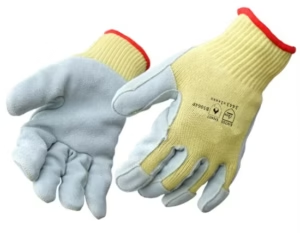Introduction
In any workplace where visibility and protection are crucial, the safety jacket plays a significant
role in keeping employees safe. Whether you work on a construction site, near road traffic, or in
a warehouse, the right safety jacket can make the difference between a secure work
environment and a potentially hazardous one. However, not all safety jackets are created equal.
Selecting the appropriate one for your specific job role requires understanding the unique
demands of your work, the potential risks involved, and the level of visibility required. This blog
will guide you through essential factors to consider when choosing the right safety jacket to
ensure maximum protection and comfort.
Understanding Different Types of Safety Jackets
Before purchasing a safety jacket, it’s essential to know the different types available and how
they cater to specific work environments.
Weather-Resistant and Thermal Jackets
For outdoor job roles that expose workers to varying weather conditions, selecting a
weather-resistant or thermal safety jacket is crucial. These jackets provide not only visibility but
also protection from rain, wind, and cold temperatures.
For example, road crews and utility workers who operate throughout the year need jackets that
offer insulation during winter and waterproof layers during rainy seasons. Lightweight,
breathable materials are preferable for warmer climates, ensuring the wearer remains
comfortable without compromising safety.
Some weather-resistant safety jackets come with removable liners, which allow workers to
adjust the level of warmth based on seasonal changes, adding versatility to the protective gear.
High-Visibility Safety Jackets
High-visibility (hi-vis) jackets are the most common type of safety jackets used across various
industries. These jackets are typically bright neon colors like yellow, green, or orange and come
with reflective strips. Hi-vis jackets ensure that workers are easily seen in both daylight and
low-light conditions, reducing the risk of accidents caused by poor visibility.
These jackets are especially important for road construction workers, warehouse staff, and
emergency responders who often operate near moving vehicles or machinery. For job roles that
involve working at night or in dimly lit areas, a high-visibility safety jacket is an absolute
necessity.
When choosing a hi-vis jacket, you must consider the class or level of visibility provided. In
many regions, safety jackets are classified into different categories based on the level of
visibility required. Jobs with high-speed traffic exposure may need higher-class jackets with
more extensive reflective coverage.
Key Factors to Consider When Selecting a Safety Jacket
Choosing the right safety jacket for your job isn’t just about picking the brightest one on the
shelf. Several factors must be carefully evaluated to ensure the jacket meets the safety
requirements of your specific work environment.
Durability and Material Quality
Since safety jackets are often worn in tough environments, they need to be made of durable,
high-quality materials that can withstand daily wear and tear. Jackets made with rip-resistant
fabrics and strong stitching tend to last longer and provide better protection.
Additional features such as water resistance, windproof layers, and removable thermal linings
add value and versatility to the jacket.
Job Role and Work Environment
The first step in selecting a safety jacket is to analyze the nature of your job and the
environment in which you work. For example:
● Construction workers: Need high-visibility jackets with strong reflective stripes for
maximum exposure on busy sites.
● Outdoor utility workers: Require jackets that offer waterproofing and thermal protection
to withstand harsh weather.
● Warehouse staff: Might benefit from lightweight, breathable jackets that prioritize
comfort while providing necessary visibility.
Understanding your exposure to risks, lighting conditions, and temperature changes will guide
you toward the most suitable jacket type.
Certification and Compliance
Always ensure that the safety jacket you choose complies with relevant safety standards and
certifications in your region. Certified jackets guarantee that they meet visibility and material
requirements necessary for worker protection.
For instance, in many countries, safety jackets must adhere to standards like ANSI/ISEA 107 or
EN ISO 20471, which specify performance criteria for high-visibility clothing. Using
non-compliant gear could put workers at risk and lead to legal penalties for companies.
Fit and Comfort
A safety jacket should fit properly to allow ease of movement and comfort throughout long work
hours. Jackets that are too loose can get caught in machinery, while those that are too tight can
restrict movement.
Look for features like adjustable cuffs, waistbands, and zippers that enhance comfort and offer
flexibility. Lightweight materials that allow for breathability are essential, especially for physically
demanding jobs.
Conclusion
Selecting the right safety jacket for your job role is a crucial decision that directly impacts your
safety and comfort on the job. It’s not just about meeting a requirement, it’s about ensuring you
are properly protected in the conditions you face daily. Whether you need high-visibility,
weather-resistant, or lightweight options, always consider your specific job role, work
environment, comfort, and necessary certifications when making your choice.
Investing in the right safety gear enhances workplace safety, improves productivity, and helps
create a secure and compliant work atmosphere. For those looking for reliable and certified
safety jackets, SA Components offers a wide range of high-quality options tailored to different
industries and job roles.
In the end, the right safety jacket is more than a uniform, it’s your personal shield in the
workplace. Choose wisely and stay safe.
.




